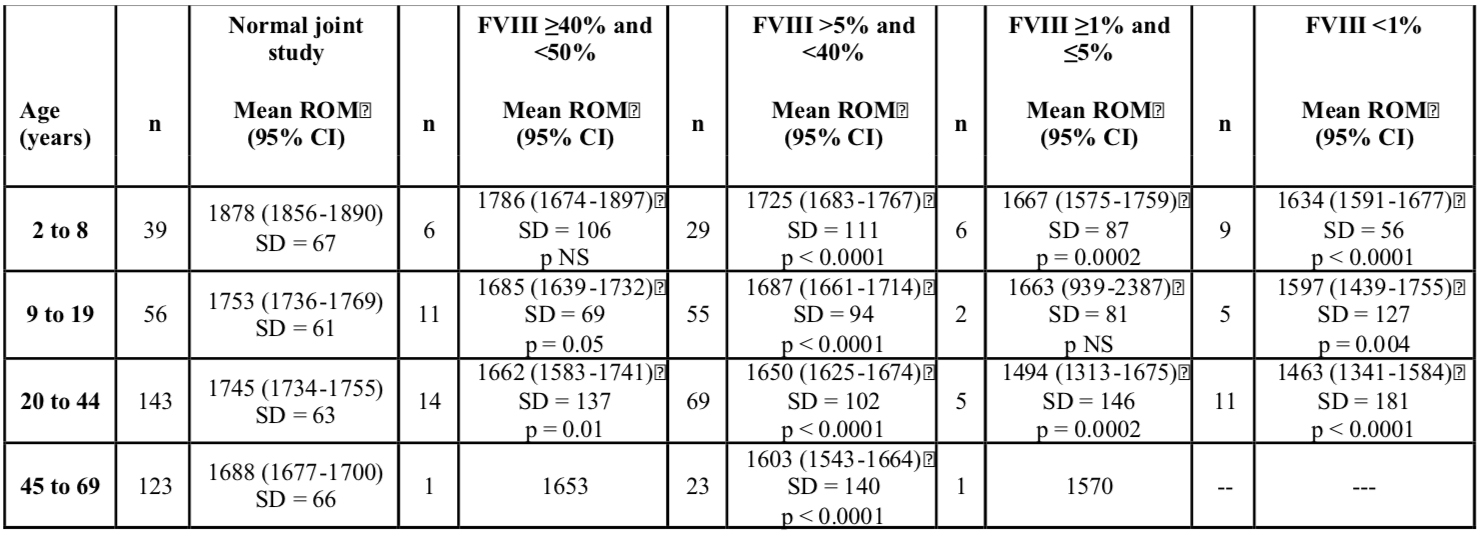Objective:
Our hypothesis was that females with FVIII deficiency enrolled in the Universal Data Collection (UDC) project have reduced mean joint range of motion (ROM) compared to historic controls from the Normal Joint Study.
Methods:
We employed a cross-sectional study design utilizing the UDC dataset. The overall joint ROM was the sum of the ROM measurements of the five joints for the females with FVIII deficiency and the normal females. Results were displayed as mean overall joint ROM by age group and factor deficiency with differences between groups assessed using the Wilcoxon- rank-sum test.
Summary:
A total of 513 females were identified with FVIII deficiency; 144 females were removed because of a lack of verification for factor deficiency, one female lacking recorded range of motion data. Of the 368 females, the median age was 26 years (range 0-78). Final analysis was performed on 247 females with FVIII deficiency between the ages of 2-69 (excluding very obese females) for comparison to the control group. The mean overall joint ROM worsened with decreasing FVIII activity and in most cases was lower than that of the controls (see table 1).
Conclusions:
Females with FVIII deficiency enrolled in the UDC project had reduced mean ROM compared to normal females without deficiency.
Table 1. Mean overall joint ROM in females with FVIII deficiency by age and factor activity.


